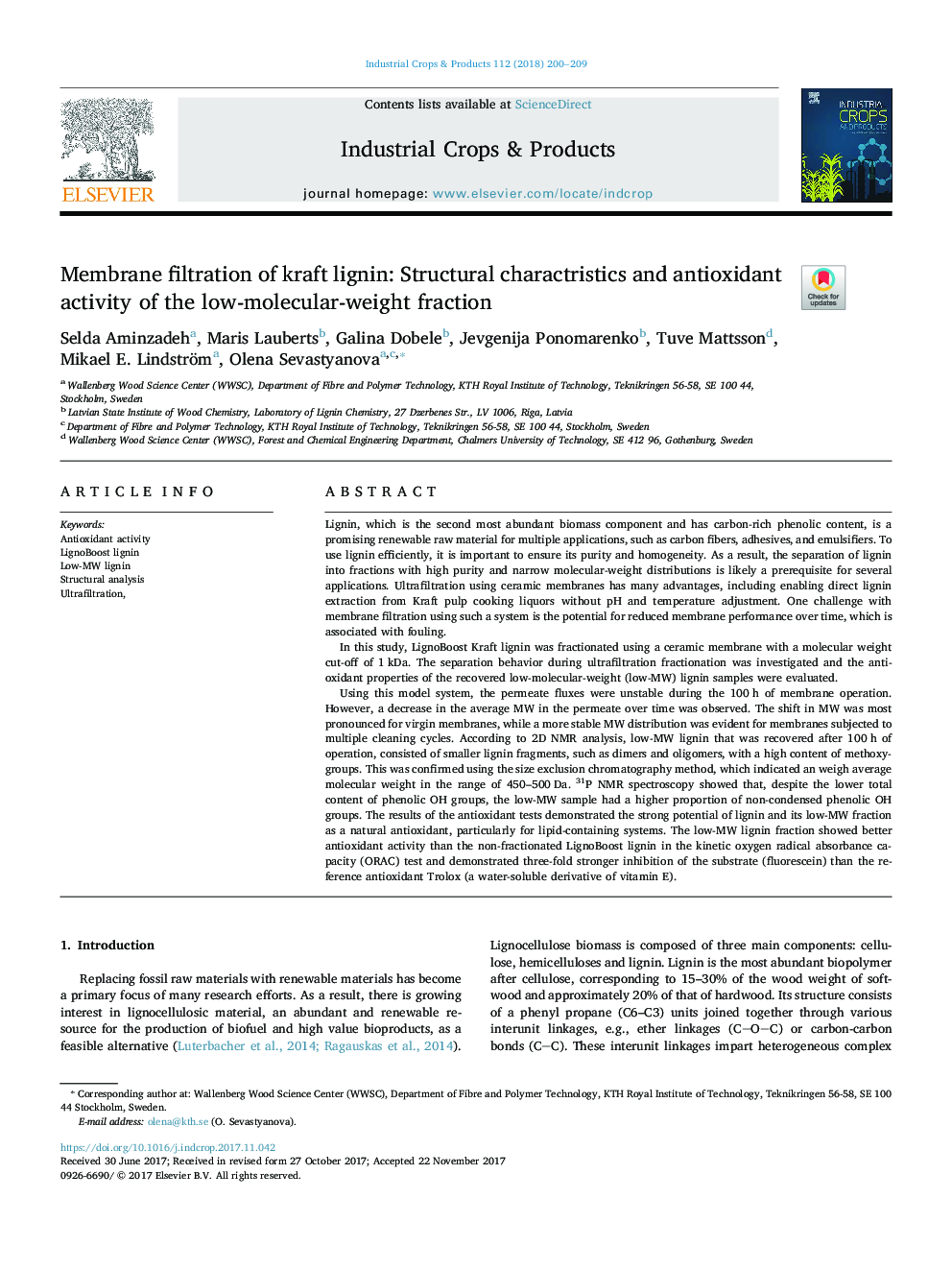| Article ID | Journal | Published Year | Pages | File Type |
|---|---|---|---|---|
| 8880685 | Industrial Crops and Products | 2018 | 10 Pages |
Abstract
Using this model system, the permeate fluxes were unstable during the 100Â h of membrane operation. However, a decrease in the average MW in the permeate over time was observed. The shift in MW was most pronounced for virgin membranes, while a more stable MW distribution was evident for membranes subjected to multiple cleaning cycles. According to 2D NMR analysis, low-MW lignin that was recovered after 100Â h of operation, consisted of smaller lignin fragments, such as dimers and oligomers, with a high content of methoxy-groups. This was confirmed using the size exclusion chromatography method, which indicated an weigh average molecular weight in the range of 450-500Â Da. 31P NMR spectroscopy showed that, despite the lower total content of phenolic OH groups, the low-MW sample had a higher proportion of non-condensed phenolic OH groups. The results of the antioxidant tests demonstrated the strong potential of lignin and its low-MW fraction as a natural antioxidant, particularly for lipid-containing systems. The low-MW lignin fraction showed better antioxidant activity than the non-fractionated LignoBoost lignin in the kinetic oxygen radical absorbance capacity (ORAC) test and demonstrated three-fold stronger inhibition of the substrate (fluorescein) than the reference antioxidant Trolox (a water-soluble derivative of vitamin E).
Related Topics
Life Sciences
Agricultural and Biological Sciences
Agronomy and Crop Science
Authors
Selda Aminzadeh, Maris Lauberts, Galina Dobele, Jevgenija Ponomarenko, Tuve Mattsson, Mikael E. Lindström, Olena Sevastyanova,
